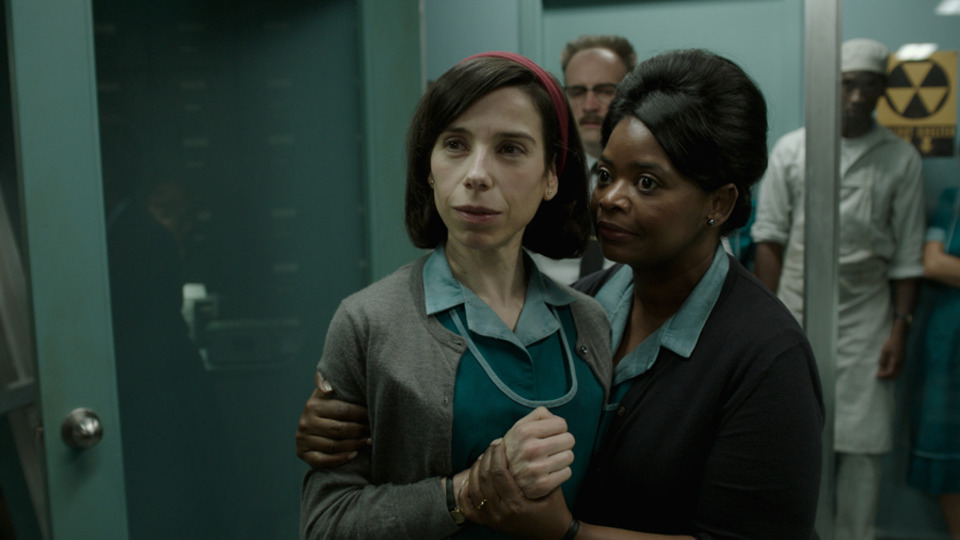The Shape of Water
Ealasaid A. Haas
Directed by: Guillermo del Toro
Starring: Sally Hawkins, Doug Jones, Octavia Spencer, Michael Shannon, Richard Jenkins, Michael Stuhlbarg
Rated: R for sexual content, graphic nudity, violence and language
Guillermo del Toro’s newest film, “The Shape of Water,” is a cold war fairy-tale that is a mix of familiar and surprising. We know how fairy tales go, how romances work, but here the story is grounded in the flesh, in sex and blood and the electric rush of intimate connection. As with the vast majority of del Toro’s films, this is not a tale for the prudish. It is, however, stunningly beautiful and a fresh, watery take on its story of a strange orphan meeting her fate in an unexpected place.
Our protagonist, Elisa (pronounced “Eliza” and played by Sally Hawkins), is mute and lives a simple and routine life. She’s on the cleaning staff at a large scientific lab, working the night shift with Zelda (Octavia Spencer), who’s as talkative as Elisa is quiet. Off the clock, she spends time with her best friend and next door neighbor Giles (Richard Jenkins), a closeted illustrator working on advertising projects. Everything is simple and pleasant enough until the menacing Strickland (Michael Shannon) shows up with a new scientific asset in tow. Strickland is a loud, abrasive bully, while the asset is an elegant, amphibious humanoid.
The Asset and Elisa have an immediate connection, and before long she’s sneaking into his lab to bring him food and teach him some basic sign language. As she explains to Giles, the Asset doesn’t see her muteness as a flaw or a lack. He just sees her, herself. Meanwhile, the Cold War looms, and paranoia about Russians getting ahead in the arms race abounds. Combine that with an utter disregard for the Asset as an individual on the parts of everybody other than Elisa, and things are headed in a dark direction.
As with all of del Toro’s films, “The Shape of Water” is a visual feast. The settings, costumes, and people are all lit and shot in a way that makes them both otherworldly and very grounded in the real. The Asset himself is a masterpiece. He’s a mix of practical effects and computer wizardry, and Doug Jones (long a staple of del Toro’s unusual and contorting cinematic creatures) inhabits the character with a grace and charisma that make it easy to forget he’s not real. Jones’ ability to act through an inch of rubber is stunning. When Elisa falls for the Asset, we can understand why.
Hawkins doesn’t so much steal the film as fill it with life. She makes Elisa complex and expressive without the aid of very much dialog – Elisa’s sign language is subtitled, but most of her communication is delivered with her expressions and physicality. She holds her own on screen against larger, louder actors, and makes Elisa’s romance with the Asset believable.
The film is definitely not for the prudish. There’s violence, torture, and the gruesome death of a pet. There’s also a very matter-of-fact thread of sexual pleasure. Elisa masturbates as part of her daily routine, and when she and the Asset are finally together outside the lab, they take full advantage of the privacy. We don’t see details in either case, but there’s also no mistaking it.
“The Shape of Water” is a fairy tale in its bones, but one in which the beast is rescued by the princess and the audience is assumed to be adults. Some folks won’t be able to get past the Asset’s inhuman appearance, but for those who can, this is a gorgeous couple of hours.
